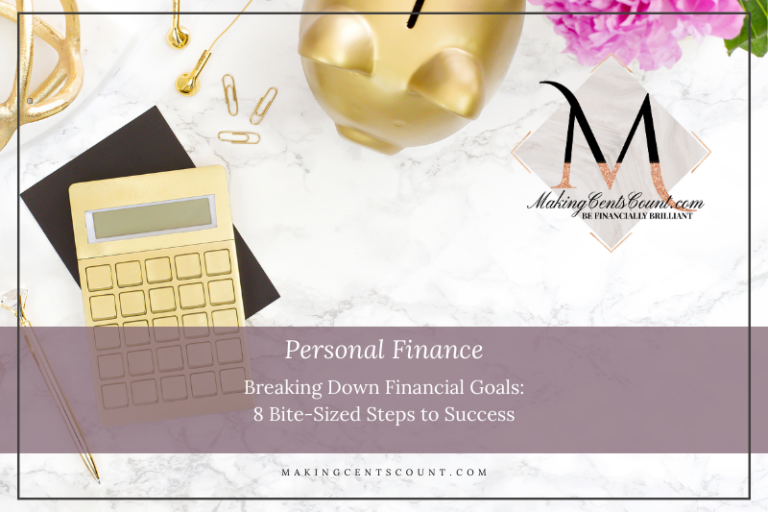8 Steps to Capture Your Budget in a Snap! (+ Free Budget Template Worksheet)
Estimated reading time: 13 minutes
Are you ready to take charge of your finances? Learn how to create a comprehensive budget snapshot in just 8 simple steps. This invaluable resource, including a free budget template worksheet, provides a quick overview of your financial standing. Discover if you’re in the red or the black and uncover where your hard-earned money disappears. By following the steps below with the right mindset and information, you’ll establish a regular budgeting habit that leads to financial success. Take control of your money today by creating a budget snapshot. Here’s how to get started.
Table of Contents
- Mastering Your Finances: 8 Steps to Craft a Budget Snapshot
- 1. Embrace Prosperity: Cultivating a Positive Money Mindset
- 2. Like-Tos vs Must-Dos: Uncover the Secrets to Prioritizing
- 3. Take It Slow: Don’t Tackle It All at Once
- 4. Choose Your Goal-Setting Style: Find the Perfect Fit
- 5. Time Assessment: Carving Out Moments to Reflect and Refocus
- 6. Embrace the Unexpected: Painting a Realistic Picture (Including Emergencies)
- 7. Consistency is Key: Revisit Often for Success
- 8. Future Forward: Embrace the Journey Ahead
- Igniting Your Path to Financial Success
- Making Cents Count Financial Organizer
Are you ready to start investing, control your finances, and prepare for retirement? Join our amazing community! You’ll receive exclusive financial tips from Making Cents Count, as well as unlimited FREE access to our resource library full of money-saving tools and guides.
Mastering Your Finances: 8 Steps to Craft a Budget Snapshot
Let’s break it down! Follow these practical steps to gain control of your finances. By implementing these simple yet effective strategies, you’ll be well on your way to creating a budget to achieve your financial goals.
1. Embrace Prosperity: Cultivating a Positive Money Mindset
Achieving prosperity is an ongoing journey of self-reflection, learning, and personal growth. It demands patience, perseverance, and a readiness to adapt our financial habits as we navigate life’s various stages. By embracing this mindset, we empower ourselves and others to embark on a path towards financial well-being and abundance.
Developing a positive money mindset goes far beyond crunching numbers on a spreadsheet. It requires a shift in perspective and fostering a healthy relationship with our finances. Instead of seeing money as a source of stress or anxiety, we should view it as a powerful tool that propels us towards our dreams and aspirations. We must celebrate even the smallest victories and cultivate gratitude for the financial resources we possess.
To fully embrace prosperity, it’s crucial to grasp the importance of financial discipline and responsible decision-making. It’s about making deliberate choices that align with our long-term goals rather than giving in to impulsive spending. This entails setting clear financial objectives, developing a realistic budget, and committing to it. It also involves cultivating healthy habits like tracking expenses, minimizing unnecessary expenditures, and prioritizing savings.
Mastering the Art of Budgeting: Prioritizing Your Finances
From my personal experience, I underwent a shift in my mindset. Embarking on a soul-searching journey helped me grasp what truly mattered in terms of my finances. It wasn’t about acquiring possessions, but rather prioritizing what aligned with my values and goals. While travel remained a priority, I realized that material possessions no longer held the same allure for me.
I am sharing this story because you might relate to the person I used to be; perhaps you are similar? It is common to encounter individuals, even in later stages of life, who bear some resemblance. On social media, we often come across friends (or friends-of-friends) who showcase the “wonderfulness” that life brings. These people embark on fabulous trips and acquire possessions associated with perceived wealth. However, sometimes these possessions are not actually theirs, as they attempt to pass them off as their own.
My point is straightforward: If you lack the funds to acquire the desired “thing,” it’s best to move on. As aptly expressed by Will Smith, “We spend money we don’t have, on things we don’t need, to impress people who don’t care.” Need I say more?
Spotting the Warning Signs: Navigating Financial Crisis Mode
Please take into consideration that typically, these very individuals often find themselves grappling with various financial challenges. These challenges may include but are not limited to loan defaults, bankruptcy filings, foreclosures, and multiple instances of being sent to collections. Despite these hardships, they persistently uphold a facade of financial prosperity, striving to navigate through their circumstances with resilience and determination.
If you ever find yourself in this situation, or if it serves as a cautionary tale, it is crucial to acknowledge that making changes to your financial circumstances requires a shift in mindset.
Unveiling the Financial Core: Digging Deep to Solve the Problem
In order to gain control over your finances and establish a realistic budget, it is crucial to delve deep into your financial situation and embrace a willingness to change. This process begins by understanding your own financial landscape and being honest with yourself about the areas that require improvement. By peeling back the layers and getting to the root of your financial situation, you can uncover the underlying factors that have contributed to your current state.
This self-reflection enables you to make informed decisions and take the necessary steps towards financial stability. It is important to approach this journey with a professional mindset, seeking guidance when needed and being open to learning from experts in the field. With determination and a proactive approach, you can shed the mask of financial uncertainty and pave the way towards a brighter and more secure financial future.
2. Like-Tos vs Must-Dos: Uncover the Secrets to Prioritizing
Crafting a budget worksheet may seem like a straightforward financial task. However, the true hurdle lies not in documenting your expenses (like balancing your checkbook), but in shifting your mindset towards money. It is in this mindset transformation where the real challenge lies.
If you are dedicated to achieving a successful budget and ready to make a positive change, it is crucial to be honest and realistic with yourself.
Level Up Your Budgeting Game
- For those who often set goals, determining their priority can be a challenge. How do you effectively prioritize your goals?
- Do you create an annual list of your broad, overarching goals and then break them down into smaller, actionable steps?
- How do you break goals down?
- Do you meticulously strategize and document each goal, or do you lean towards spontaneity and record them as they come up?
One of the most significant questions when it comes to setting goals is this:
- Do you determine your goals based on genuine desires or out of necessity during a crisis? Is it a matter of something you truly wish to achieve or a “must-do” situation at this point?
Unleash Your Budgeting Philosophy: There Are No Limits
Your philosophy of setting goals extends beyond just financial aspirations. Consider this scenario: if your goal is to lose weight, are you pursuing a diet because you simply ‘want to’ or because your doctor has emphasized its importance due to your current health crisis?
Consider your budget and finances as an example. Would you prefer them to be well-organized and manageable, where you have full control? Or are you possibly on the brink of bankruptcy, where you must prioritize and categorize expenses to avoid filing?
Can you perceive the distinctions between the notions of “liking to” and “must-do”? When it comes to taking the initiative in managing your finances, would you classify yourself as being in the “like to” or “must-do” stage in your life?
3. Take It Slow: Don’t Tackle It All at Once
Building on the previous idea, if the majority of your financial goals fall under the category of “nice to have” goals, it’s important not to overwhelm yourself by trying to achieve everything simultaneously. Take it step by step. Start by creating a budget worksheet this week, and then shift your focus to considerations such as retirement, savings, or debt in the following weeks.
I came across this profound saying that has always resonated with me: “Everything Isn’t Something.” It reminds me that I can’t make everything our top priority. Instead, I need to prioritize my goals by jotting them down in order of importance and tackling them systematically. This approach allows me to concentrate on each task, ensuring that I accomplish what truly holds significance to me.
Budgeting Breakthrough: Unveiling the Secrets to Financial Transformation
Occasionally, accepting this concept can prove to be quite challenging. Particularly when you find yourself at the “must-do” stage in your financial journey, it may feel urgent and necessitate drastic, sweeping changes. However, adopting a slow and steady approach is always more advantageous for achieving lasting transformation.
It’s an excellent concept that applies to various aspects of life—how do you respond (or choose not to) to unexpected situations? How do you manage circumstances that are completely beyond your control? At times, you must focus on what you can accomplish today and then set your sights on the next goal for tomorrow.
4. Choose Your Goal-Setting Style: Find the Perfect Fit
Given that goals, particularly financial goals, are deeply personal, it’s remarkable how diverse they can be. Selecting a goal-setting approach that aligns with your preferences is crucial for success.
Cracking the Code to Success: Unleash Your Potential with the Power of “BIG 3” Goal Setting
What I do when it comes to my own goals is to write down my “BIG 3” annual goals. I begin by breaking down each goal into smaller, manageable parts and mini-steps. This approach allows me to easily readjust and get back on track if I veer off course for a week or even a month. It’s far simpler than setting numerous goals at the start of the year and eventually feeling overwhelmed, leading to giving up.
I find using this strategy much easier in keeping a solid grip on my goals, and it forces me to look at my hard numbers each month moving forward, ensuring that I’m on track.
5. Time Assessment: Carving Out Moments to Reflect and Refocus
To successfully create a budget worksheet and achieve your financial goals, time is crucial. Setting financial goals and creating a budget is not a one-off task, but rather an ongoing process that requires regular revision and attention.
Knowing yourself best is key in this scenario. If you’re just starting out, it’s advisable to monitor your financial situation multiple times a week. As you settle into a routine and witness the positive outcomes of your budgeting strategies, you can gradually reduce the frequency to once a week or every other week.
Budget Worksheet Showdown: How Does Yours Stack Up?
As you become more financially advanced, you can block out time to assess your investments, take a few minutes each month to evaluate your retirement funds, and move forward with your bigger financial goals. But don’t worry if you aren’t there yet. It will come eventually.
In the interim, set aside a dedicated slot in your schedule to compare your bank account with your budget snapshot. How does your financial situation measure up?
6. Embrace the Unexpected: Painting a Realistic Picture (Including Emergencies)
In our Free Resource Library, I’ve created a complimentary budget worksheet to assist you with your planning. The Monthly Financial Snapshot is a concise one-page worksheet that provides a comprehensive overview of your monthly expenses and savings. Establishing a monthly financial objective, such as paying bills in advance or achieving a specific savings target, allows you to monitor your progress throughout the year.
If you’re ready to begin, make sure to download the budget template worksheet. As you’ll see, it’s a simple process of listing your income and monthly expenses to create a clear snapshot of your budget. Throughout this straightforward process, you may start to uncover valuable insights.
Supercharge Your Budget: Conquer Financial Control with This Game-Changing Tool
If you’re looking for something more robust, and you prefer creating your monthly budget using Excel, our Monthly Budget Workbook Template is available for purchase.
- What about those unexpected surprises that sneak in, bringing along additional expenses? How will you factor in those unforeseen costs that you weren’t quite prepared for?! Aren’t they just delightful?!
- What if an unexpected emergency arises? Are you financially prepared to ensure it doesn’t derail or hinder your progress towards your goals?
When an emergency occurs and impacts your monthly budget, it demonstrates that having no room for error in your financial life is not feasible, regardless of how cautious you are. Maintaining a life with zero margins for error is both unrealistic and impractical.
Building Financial Resilience: Crafting Your Cash Cushion + Emergency Fund
Did you know that a staggering 63% of American workers lack the ability to handle a $500 emergency expense? This thought-provoking statistic sheds light on the importance of having an emergency fund. Imagine if you were faced with a $500 emergency – would you be prepared?
If you’re someone with an “A-Type” personality like myself, you might find yourself feeling a bit frustrated if your budget worksheet doesn’t turn out as expected. The thing is, life has a way of happening and it can have an impact on your finances, often not in a positive way.
Protect yourself by preparing for emergencies. Establishing an emergency fund will provide a financial safety net, bringing peace of mind and stability to your budget.
7. Consistency is Key: Revisit Often for Success
While some may view budgeting as a drag, I must admit that I don’t mind creating a budget. It’s like crafting a masterpiece of my own creation – a financial work of art!
There is a certain satisfaction in comparing each monthly snapshot with the previous months. What makes this particularly appealing to me is that I establish my financial goals at the start of the month, and when I review my budgeting worksheet at the end of the month, it provides me with all the necessary information; after all, numbers don’t lie.
Essential Budgeting Questions to Ask Yourself
- Do you regularly assess your financial situation?
- Have you successfully achieved your financial goals?
- Did you end up with more disposable income than you anticipated by the end of the month?
- Did you manage to save or invest more than you originally intended?
As I may have mentioned before, I am genuinely passionate about numbers—I can’t help but geek out over them, as I’m doing right now! But jokes aside, there’s nothing that brings me more joy than seeing my actual numbers exceed my estimated ones every month when I create a budget snapshot. It’s these little victories that truly make a difference, my friends!
8. Future Forward: Embrace the Journey Ahead
Once you’ve completed your budgeting worksheet, a lingering question remains: what should you do with the surplus funds after settling an existing financial obligation?
When you have some extra money, how do you decide how to use it? Will you treat yourself to something special? Allocate the funds towards another obligation? Or maybe consider making a wise investment? Alternatively, you might choose to save it in your savings account for safekeeping. (Of course, there’s always the chance of impulsively spending it all without a second thought!)
When you get extra money in your budget, think of it as a gift of opportunity. You can use that money to further your financial goals. Creating a budget worksheet will help you track and identify these mini windfalls.
As with any significant changes you may be considering in your life, if you’re starting to budget from scratch, take the time to find tools to help you formulate your future game plan.
By taking small steps every day, you can pave the way towards achieving your desired financial results. Remember, consistency is key. Stay focused on your goals and make informed decisions along the way. With dedication and perseverance, you’ll be well on your way to a financially prosperous future. Here’s to your success!
Igniting Your Path to Financial Success
If working on your finances is one of your goals right now (or, maybe it’s been a goal for some time), I suggest starting with the Making Cents Count Financial Organizer.
Our financial organizer is the robust answer you need. The organizer is our DIY financial services option, providing you with the tools to eliminate financial overwhelm.
In the exclusive Making Cents Count Financial Organizer, you’ll get:
- Clear strategies to get your finances under control
- Processes to organize and streamline your investments
- Guidance to track your legal documents, tax information, and permanent records
- Markers to know when you should meet with an attorney to establish a will or trust
- Templates, checklists, and step-by-step actions
- Insights on the financial-must haves to build a secure future
- Detailed How-To Guide for optimal results
If you want financial confidence, grab the Financial Organizer, and get results that fit *your* lifestyle!
Making Cents Count Financial Organizer
Once you get your budget rolling, check out my post on 6 Simple Steps to Get Financially Organized. This post also includes a helpful checklist available in my Resource Library (free to access).
Admittedly, this particular checklist has a larger-scale focus on your overall financial picture, but I genuinely feel that getting your finances organized is essential.
I’m so excited to invite you to join our Financial Success Society Waitlist! Our enrollment opens soon (so don’t miss a chance to get on the notification list). Your journey to financial success is unique and with this exclusive membership, you’ll receive the guidance you desire, enabling you to move financially forward, no matter where you are in your financial journey. At Making Cents Count, we offer an array of outstanding products and services to help you get control of your finances so they won’t control you!







